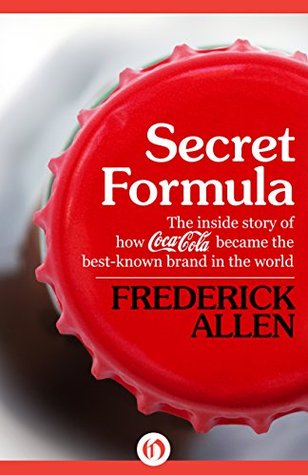More on this book
Kindle Notes & Highlights
Started reading
April 27, 2019
They designed a bottle whose vertical striations and curved, bulging middle bore no resemblance whatsoever to the coca leaf or kola nut, but instead was a dead ringer for the totally unrelated seed pod of the cacao tree, the source of chocolate. Thus was born one of the most familiar shapes in product history.
Holmes called Coca-Cola “a single thing coming from a single source, and well known to the community.”
if it is not dangerous and whether it will kill you, and if it is not wrong for your children to drink it.”
One could argue that it is dangerous and could kill you. Look at Grandpas friend Bill Malone, who ended up with a ruptured ulcer from the carbonation in Pepsi-Cola. Different brand of pop, but same carbonation.
“Hang the chart,” he once explained to Walter White, “these men are here to sell trucks!”
Before he could lead, he had to prove he was a leader.
“Being too lazy to think is the cause of religious prejudice—the cause of Republican administrations, threatened railroad strikes, prohibition, bad roads and divorces. People have plenty of ability to act intelligently if they would only think.”
More people in Georgia had money invested in the Coca-Cola Company than any other enterprise in the South,
Many in the company feared the return of beer would cut into Coca-Cola’s sales, and Harrison Jones proposed a solution: Coca-Cola Beer.
“It would be my idea,” he wrote, “that we manufacture a beer, both in bulk and in bottles, and that we make all the accepted forms, both light and dark, [so] that we might have a full line and meet the demands of a varying population and varying taste.”
In the early 1930s, the name Coca-Cola appeared on 20,000 walls, 160,000 billboards, and five million soda fountain glasses across the country, and the company’s ads were reproduced on more than 400 million individual newspaper and magazine pages a year.
In Dayton, Ohio, for instance, the bottler distributed company-made “Coca-Cola Nature Study Cards” in the 198 schools in his franchise area and worked at cultivating the goodwill of the PTA by distributing toy gliders, packages of needles, pencils, rulers, balloons, thermometers, billfolds, and other items (including a Coca-Cola scooter and an electric corn popper) for sale at school bazaars.
This would be so cool to find some from an antique store to buy as collectibles, but which case should I display them in? Dayton history or Coke history?
Sundblom’s broad, creamy brush strokes and evocations of inner warmth were fine for creating impressions and moods, but the bottle of Coca-Cola in the picture had to be an exact, flawless reproduction, right down to the tiny lettering of the trademark and patent registrations. Sundblom was free to reshape the popular concept of Santa Claus, that is, but not to tamper with Coca-Cola.


